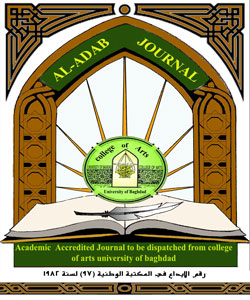Yakup Kadri Karaosmanoğlu’nun “Hep O Şarkı” Adlı Romanında Soru Cümleleri
DOI:
https://doi.org/10.31973/aj.v0i133.750Keywords:
interrogative sentences, Jakob QadriAbstract
The purpose of the abstract: The Interrogative sentences are one of the more using sentences in the Turkish language & normal life in the Turkish society.
For the reason, the basic purpose of this abstract; is the Interrogative study by its meaning and its linguistic structure.
Upon y study, I focused on the interrogative sentences in a novel of (Jacob Qadri Kara Osman Oglu) under the title of (All This Song), I have selected this study because the author is one of novel name in the Turkish literature and also has been mentioned interrogative sentences largely for this novel.
In Introduction or Preface, we mentioned to the meaning of interrogative sentences & its structure and we have dealt with value sources in the field of Turkish language for the Turkish linguists that they searched in the interrogative sentences generally.
Downloads
References
Agakoy, Mohammed A. 1952, Turkish language on Question Sentences, İstanbul.
Bilgegil, Kaya 1984, Turkish grammar, İstanbul.
Demirjan, Omar 1979, Sound System of Turkish, TDK Publications, Ankara.
Ergin, Muharrem, 2000, Turkish Grammar, Bayrak Publishing House, Istanbul.
Hengirmen, Mohammed, Turkish Grammar, 2007, 9th Edition, Engin Publishing, Ankara.
Sarı, Mohammed, 2011, Turkish Language Textbook, 2nd Edition, Instructor publishing, Ankara.
Downloads
Published
Issue
Section
License
Copyright and Licensing:
For all articles published in Al-Adab journal, copyright is retained by the authors. Articles are licensed under an open access Creative Commons CC BY 4.0 license, meaning that anyone may download and read the paper for free. In addition, the article may be reused and quoted provided that the original published version is cited. These conditions allow for maximum use and exposure of the work.
Reproducing Published Material from other Publishers: It is absolutely essential that authors obtain permission to reproduce any published material (figures, schemes, tables or any extract of a text) which does not fall into the public domain, or for which they do not hold the copyright. Permission should be requested by the authors from the copyrightholder (usually the Publisher, please refer to the imprint of the individual publications to identify the copyrightholder).
Permission is required for: Your own works published by other Publishers and for which you did not retain copyright.
Substantial extracts from anyones' works or a series of works.
Use of Tables, Graphs, Charts, Schemes and Artworks if they are unaltered or slightly modified.
Photographs for which you do not hold copyright.
Permission is not required for: Reconstruction of your own table with data already published elsewhere. Please notice that in this case you must cite the source of the data in the form of either "Data from..." or "Adapted from...".
Reasonably short quotes are considered fair use and therefore do not require permission.
Graphs, Charts, Schemes and Artworks that are completely redrawn by the authors and significantly changed beyond recognition do not require permission.
Obtaining Permission
In order to avoid unnecessary delays in the publication process, you should start obtaining permissions as early as possible. If in any doubt about the copyright, apply for permission. Al-Adab Journal cannot publish material from other publications without permission.
The copyright holder may give you instructions on the form of acknowledgement to be followed; otherwise follow the style: "Reproduced with permission from [author], [book/journal title]; published by [publisher], [year].' at the end of the caption of the Table, Figure or Scheme.











